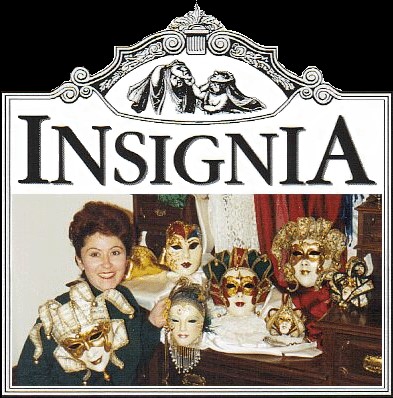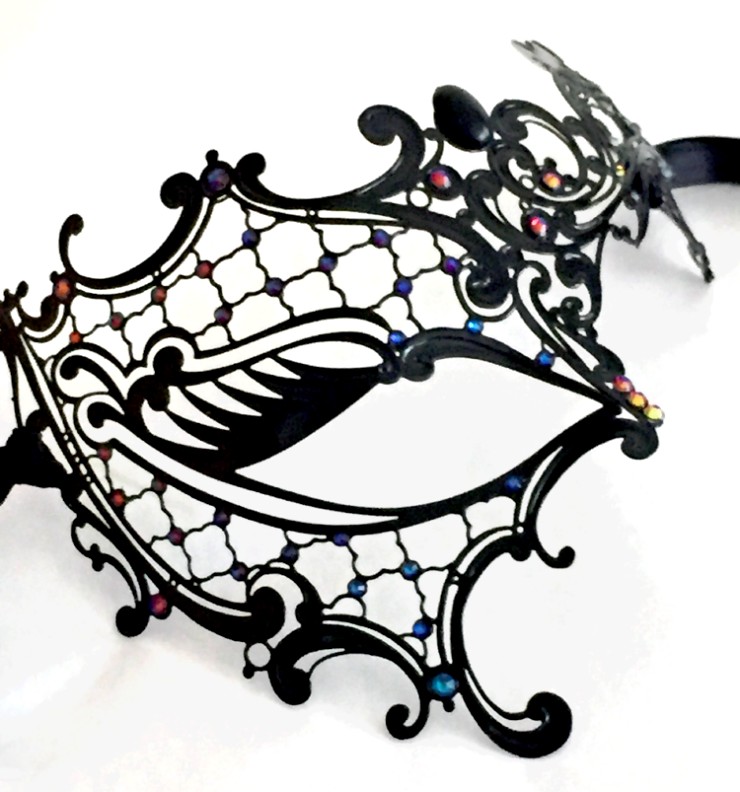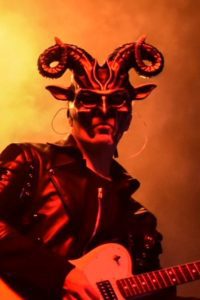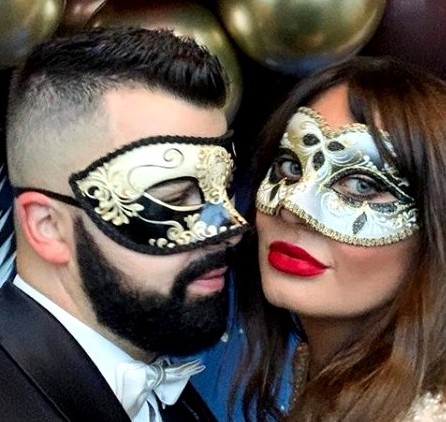Masquerade Mask History
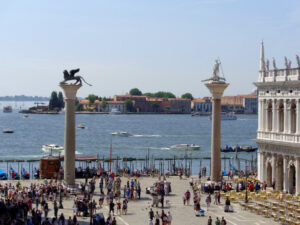
The origins of modern Masquerade Masks are buried deep within the tombs of Egypt and the catacombs of ancient Rome. I guarantee that Masquerade Mask History will surprise you again and again.
Around the time Julius Caesar was romancing Cleopatra, Egypt observed a Pagan Festival in honor of the coming harvest.
Ancient Masks are made from papier-mâché. The Egyptians worked in this medium which led scholars believe this to be the origin Masks. The Romans enjoyed the custom freely, always ready for the excess’s of a party they happily took part.
The Romans delighted in bringing exotic treasures and customs back to Italy so that they appeared worldly. So it was that the custom migrated to Italy along with cats and other things now freely accepted in Europe.
History of Venetian Masks
The Pagan festival of the Harvest which is also the origin of Thanksgiving was popular amongst the Italians but was out of step with Christian beliefs. Therefore, 1500 years ago the Pope of the time declared that the festival would become a Christian festival. Carnevale is a celebration of excess that lasts 14 days immediately preceding the abstinence of lent.
The name Carnevale (Carne/meat) implies an abstinence from meat which is likely during the time of fasting.
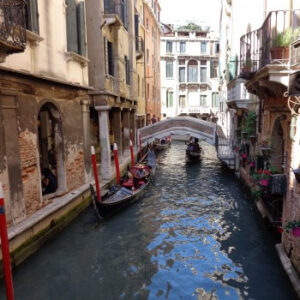
Masks flourished in the elegant city of Venice so that a Mask Makers Guild was formed in 1436.
Although Carnevale lasted for only 2 weeks, masks became popular all year round.
The mask allowed Venetians freedom to enjoy their life, free from the recognition and judgment of others. Not restricted by class or marital status when in masked disguise, wealthy and poor alike enjoyed the mask. The wealthy cultured city is said to have become quite decadent with the freedom that the mask fashion gave them.
The Plague in Venice
Masks grew in popularity after the plague came to Venice. Unsightly scars covered the faces of those who survived the pox. Masks hid the scars and looked good so that people came to use it as a routine fashion accessory. As a result, various styles of masks emerged within a population that wore masks all year round.
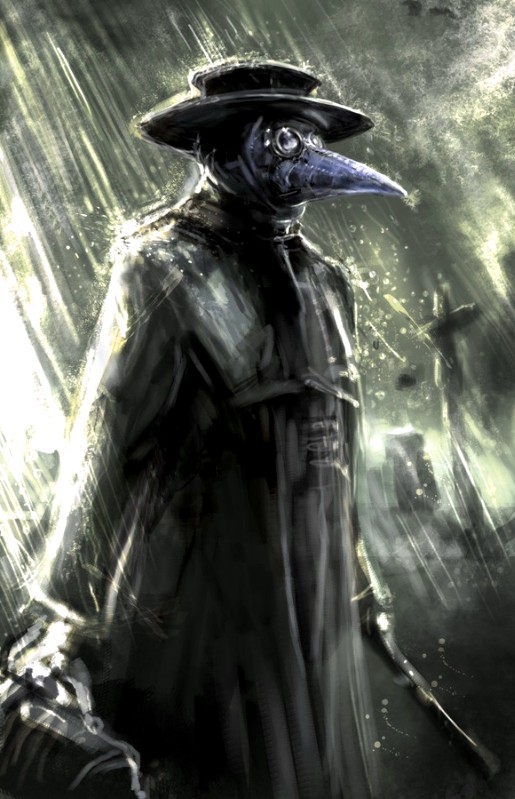
The “Doctor of the Pestilence” wore a long cloak and a white mask with a bird like beak. This mask always had glasses painted onto it to symbolize education. Within the cavity of the beak the doctor had disinfectant fragrant herbs that assisted in disguising the stench of death.
He would lift the bed covers with a long stick and make his assessment of the patient.
The population had a superstitious view of the plague. The Doctor chose a bird mask to frighten off the evil affliction. Bedrooms nailed shut to isolate the sick sometimes led to them dying of neglect.
With the aid of leaches the sick received archaic medical treatment which often resulted in them becoming weaker.
Moretta Mask
An oval mask called the Moretta was worn before marriage by women of all social classes. By clenching her teeth around a button on the back of the mask, she holds Moretta in place. This renders her silent, mysterious and most alluring as she meandered through the watery labyrinth of Venice.
Colombina Mask was usually worn after the wedding so that young women are then able to express themselves. Many a disappointed young groom would find his wife somewhat different to the silent maiden he married.
Colombina Mask
Casanova’s lady love, “Colombina” wore a simple eye mask that is the origin of the modern ladies masquerade mask. Colombina is worn around the world today as it frames the eyes so that the eyes are the point of focus. Held in place with ribbons, the wearer no longer silent.
Non Binary Gender Neutral Bauta Mask
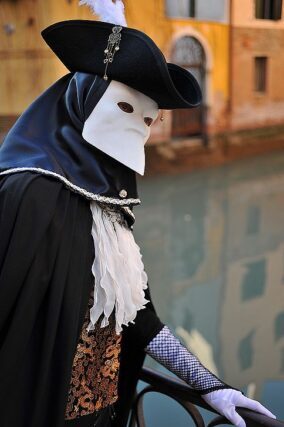
The “Bauta”is known as the Mask of Venice. In the Veneto region it is worn by men and women at the Carnevale di Venezia.
A long black cloak and a Bauta mask is the ultimate disguise. The prominent jaw disguises the voice. The gender of the wearer is hidden under the cloak and the features hidden behind the mask.
The Bauta’s fierce expression added drama and intrigue but also made the wearer look powerful. Casanova would have worn the Bauta Mask so that today the Bauta is also called Casanova. No doubt he would have been a handsome figure, confidently striding thru narrow streets wearing mask, tricorn hat and cloak.
So Many More Masks
Many more historical Masks of Venice, some lost in time and some still available today in the ancient city.
Rarely made from papier-mâché, masks are now more affordable. Quality plastic is treated so that it looks like a traditional mask. These modern masks are comfortable, less likely to steam than those made in China and therefore a sensible option.
Various “Commedia Dell’ Arte” (ancient theatre) masks are worn including “Pulchinello, Zane, Capitano, Scaramouche and Arlecchino”.
The “Gnaga” was popular amongst the effeminate gentlemen who were prone to a high pitch voice. Masks were a valuable disguise at a time when homosexuality was forbidden but dalliances were frequent.
Some say Gnaga comes from the word “gnau” or the meow of the cat which many of its wearers’ voice resembled. The Venetian saying is “to have a voice like gnaga” which refers to men and women with high pitched voices. This is contrary to the deep, emphatic and melodic voices of the modern Venetian citizens.
The Spanish Inquisition was a challenging time when Casanova was active winning the favors of many ladies. A story in itself, I recommend reading the memoirs of Casanova written by the man himself.
Casanova is recognized as the western world’s most famous “lover”.
He was imprisoned for debauchery however after a daring escape from the Doge’s Palace Casanova was exiled from Venice. His memoirs make a good read and give valuable insight to the lifestyle and values of the time.
Masks Banned by Napoleon
The Spanish Inquisition declared Masks illegal, however it was difficult to police. How do you identify a person in a mask beyond all doubt? Thus the mask survived until Napoleon conquered the Province. Threatened by the revelry and the anonymity of the mask and successfully banned it.
Rebirth of Masks
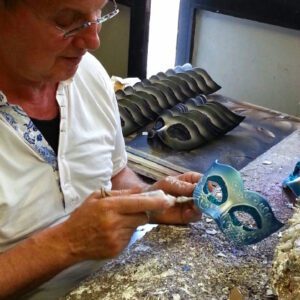
For hundreds of years Carnivale took place without masks. However in 1978 an artisan named Victor decided to make some masks for his family.
So many people asked where they got their masks that the next year he produced more. The masks were made by art students of the Academia which is Venice’s University.
I know Victor Fagarassi, the father of modern masks in Venice and confirm it was a privilege to know him. We have sold many of his and his wife’s masks all hand painted treasures.
An Evolving Art Form
In modern times masks have evolved into Amazon Warrior, Pierrot and Phantom of the Opera. In fact I was the first Mask Shop in Australia and when I started importing from Venice, there were no Phantoms for sale. The story of Phantom has French origins and was not made by the Italian mask makers.
The very first Phantom Masks made in Venice were in fact made for me creating Wholesale Masquerade Masks. I remember drawing the shape on a plain face to design the cut of the mask. We designed two masks that day, one has been copied many times.
Venetian masks are often have music paper trim so that they are sweet memento of a city full of music. There are pretty ceramic imitations of the life size masks that make sweet mementos for the modern tourist.
Cat Masks
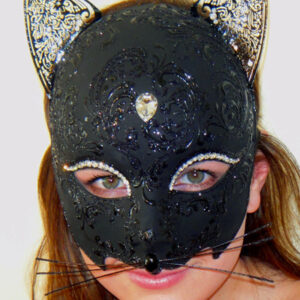
Even Cats had a paw in the history of Masquerade so that they have left their mark on the hearts of the Venetian people. Cats were introduced to Europe when Cleopatra gifted them to Julius Caesar.
These domesticated and beautiful creatures were critical to protect valuable grain stores from vermin.
The “Cat” is popular in Venice not just because of its endearing nature. Rats that spread the plague were eventually controlled by the cat so that the cat became the “Savior of Venice”.
They happily cohabitate with humans in the densely populated apartments of the ancient city. Happy to live on the fifth floor with only a window to link them to the outdoors…. the domestic cat is much loved in Venice. There are many Cat Masquerade Masks in Venice to celebrate this delightful bit of history.
Modern Cat masks trimmed with Swarovski crystals, glitter and elaborate eye lashes are a delight. The artisan will sometimes draw a heart on the nose of a cat mask.
Filigree Masks – Metal Lace
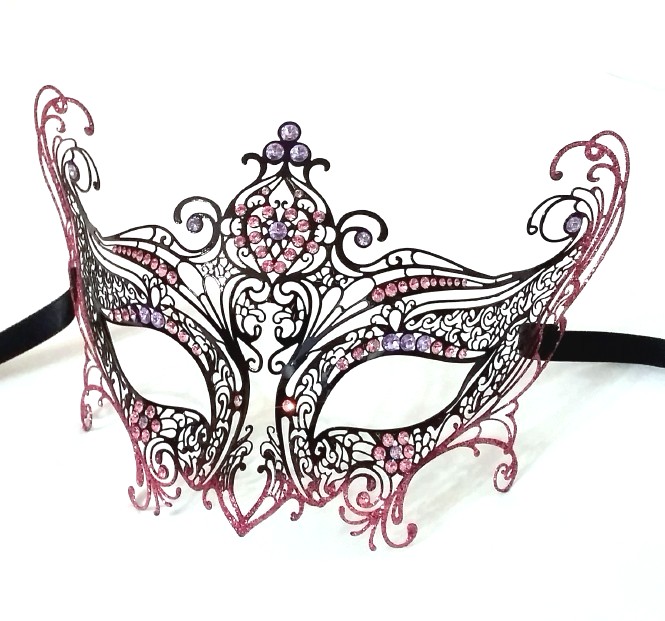
Filigree Lace Masks are powder coated in black, gold or silver so that they resemble fine jewelry.
Metal masks take many forms including cat, phoenix, angel and fox. They are romantic, whimsical and pure fantasy. Elegant and modern, these metal masks are light and comfortable to wear. They are slightly flexible and the Italian made ones contour the face perfectly.
In conclusion, I sincerely hope that the History of Masquerade Masks has delivered the wonder and intrigue of the great city of Venice. I cannot separate the History of Venice from Venetian Masks as they have shaped the city for over six centuries however the city has more to tell.
For more Masquerade Mask Information please visit our blog.
